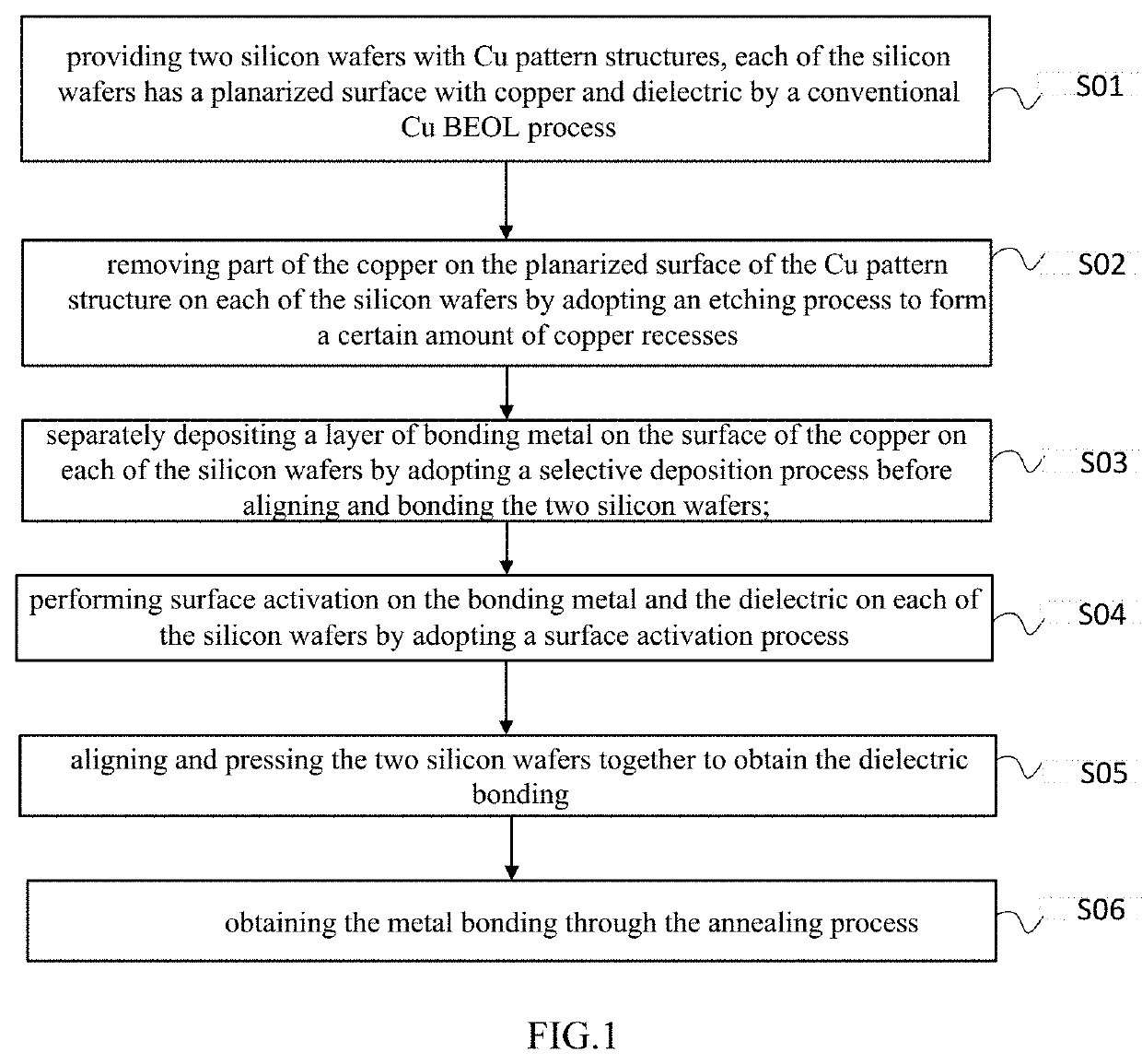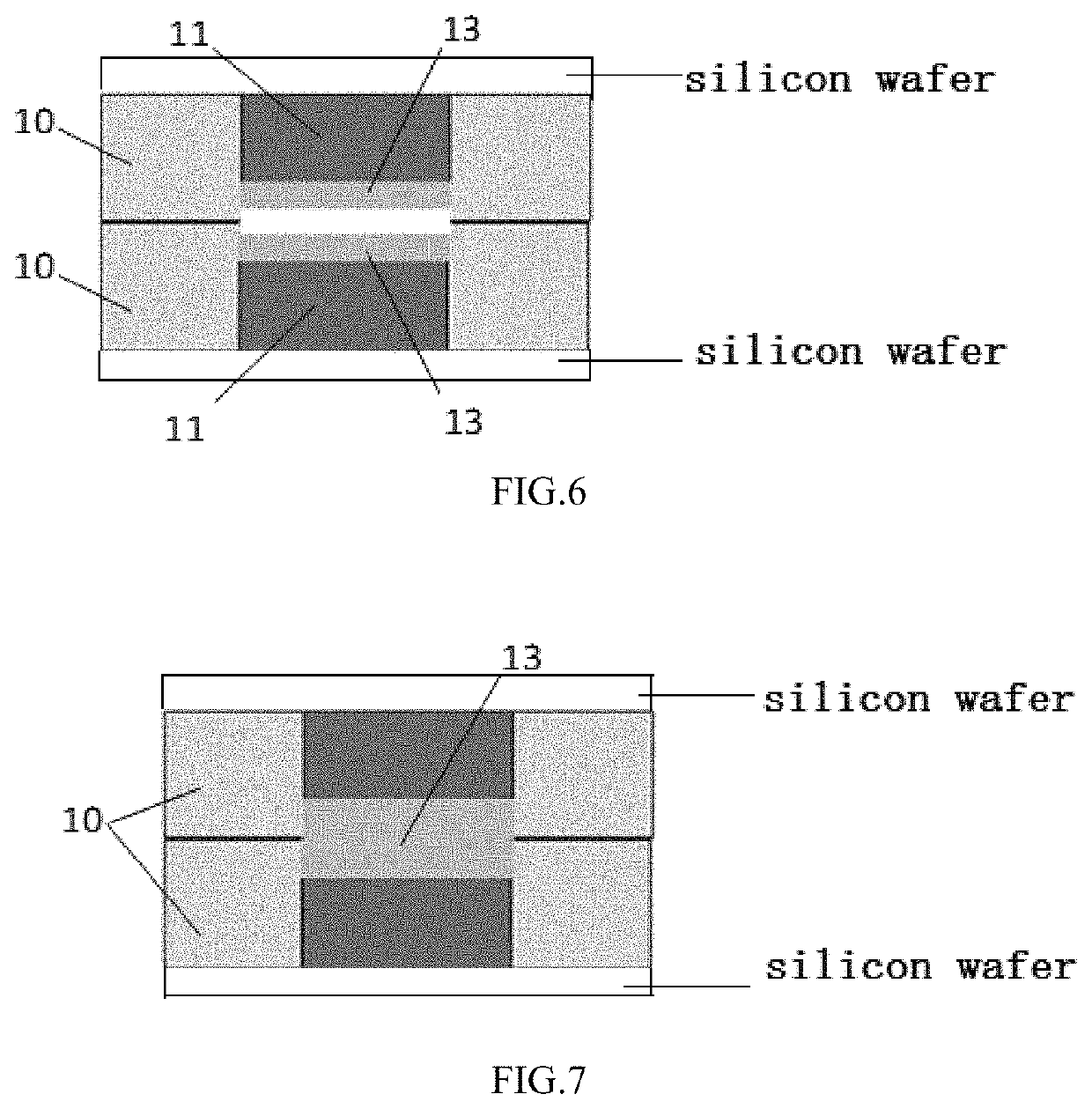Method for hybrid wafer-to-wafer bonding
a bonding method and wafer technology, applied in the direction of basic electric elements, electrical equipment, semiconductor devices, etc., can solve the problems of high risk, high investment and high risk of cutting-edge technologies, and exclude many small and medium-sized integrated circuit manufacturers, and achieve sufficient metal bonding, shorten the annealing process time of bonding metal, and reduce the risk of dielectric delamination caused by thermal expansion mismatch
- Summary
- Abstract
- Description
- Claims
- Application Information
AI Technical Summary
Benefits of technology
Problems solved by technology
Method used
Image
Examples
Embodiment Construction
[0028]The contents of the present invention will be described in further detail below with reference to the accompanying drawings. The present invention can have various changes in different examples, is not separated from the scope of the invention, and the description and illustration thereof are intended to be illustrative in nature and not to limit the invention. It should be noted that the drawings both adopt a very simplified form and use a non-precise ratio, to facilitate the purpose of describing the embodiments of the present invention in a convenient and clear manner.
[0029]In the following detailed description of the present invention, please refer to FIG. 1, FIG. 1 is a flow chart of a method for hybrid wafer-wafer bonding according to the present invention. At the same time, please refer to FIGS. 2-7, FIGS. 2-7 are schematic views of a process for performing the hybrid bonding between two silicon wafers according to the method shown in FIG. 1. As shown in FIG. 1, the met...
PUM
| Property | Measurement | Unit |
|---|---|---|
| temperature | aaaaa | aaaaa |
| temperature | aaaaa | aaaaa |
| height | aaaaa | aaaaa |
Abstract
Description
Claims
Application Information
 Login to View More
Login to View More - R&D
- Intellectual Property
- Life Sciences
- Materials
- Tech Scout
- Unparalleled Data Quality
- Higher Quality Content
- 60% Fewer Hallucinations
Browse by: Latest US Patents, China's latest patents, Technical Efficacy Thesaurus, Application Domain, Technology Topic, Popular Technical Reports.
© 2025 PatSnap. All rights reserved.Legal|Privacy policy|Modern Slavery Act Transparency Statement|Sitemap|About US| Contact US: help@patsnap.com



